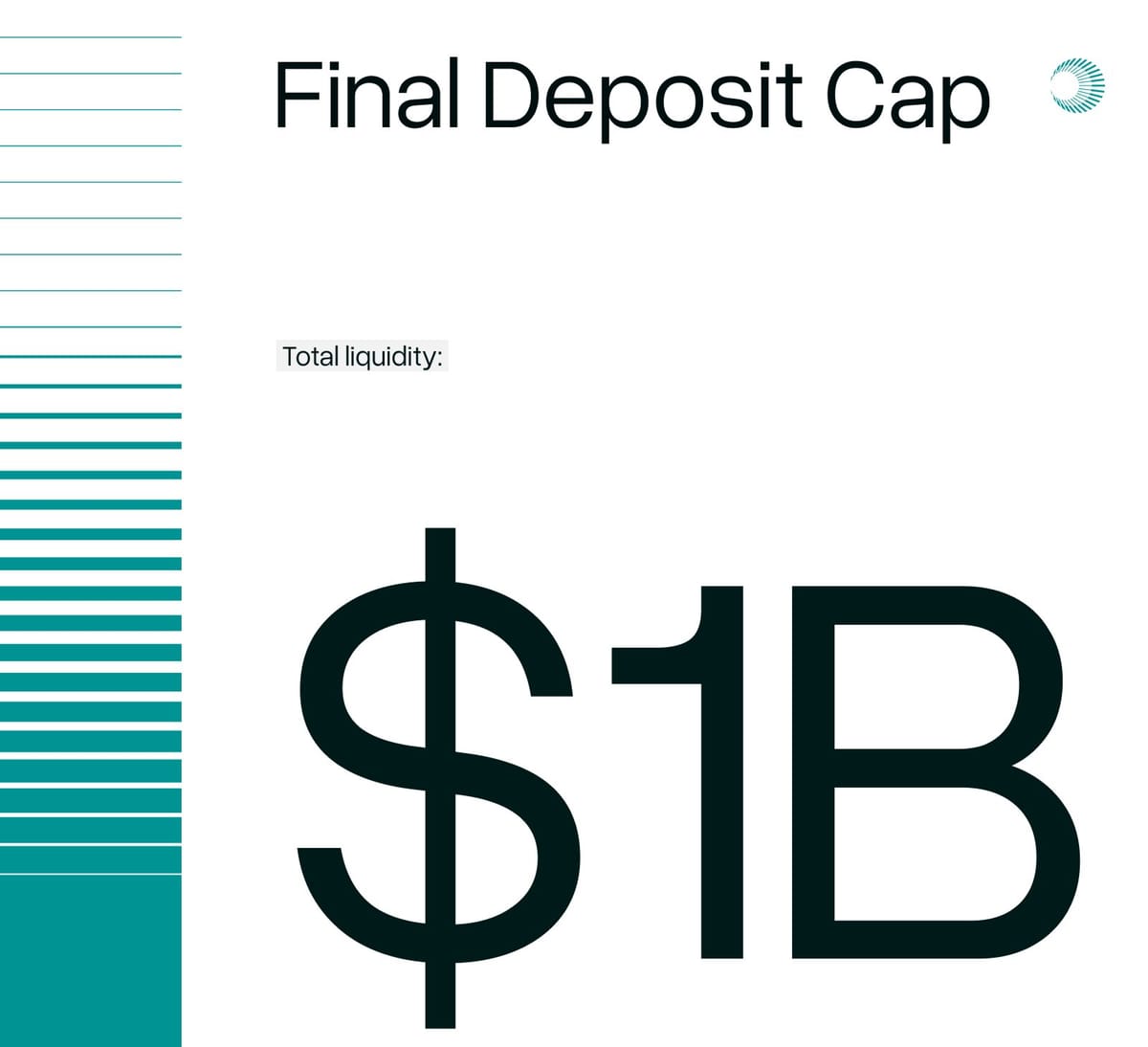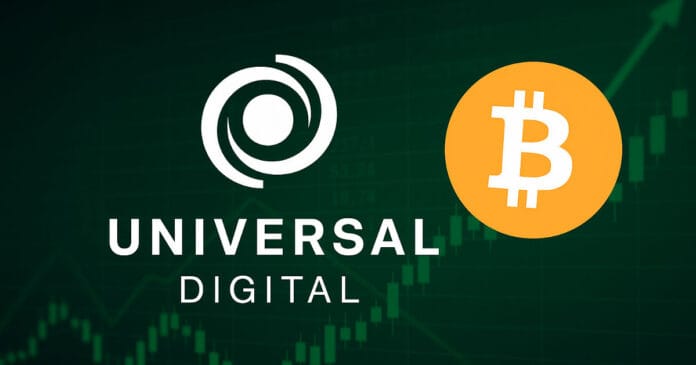How Plasma Raised $1 Billion in Deposits With an Eye to Becoming a Major Stablecoin Chain

In June 2025, Plasma a new blockchain project focused on stablecoins generated massive buzz by raising $1 billion in deposits in a matter of minutes. These deposits weren’t a typical fundraiser but rather a way for users to secure a spot in Plasma’s upcoming token sale. The astonishing demand (hitting the $1B cap in just 30 minutes) has made Plasma one of the most talked-about new networks of the year. What exactly is Plasma, how did it attract so much capital so quickly, and why do its founders believe it could become a major chain for stablecoin usage? In this article, we’ll break down Plasma’s background and rapid growth, its pitch as a “stablecoin-centric” blockchain, and what the rise of Plasma might mean for stablecoin adoption and user behavior.
What is Plasma and How Did It Grow So Quickly?
Plasma calls itself a blockchain “purpose-built for stablecoins,” essentially a specialized network where transferring and using stablecoins (like USDT) is extremely efficient. It is implemented as an EVM-compatible sidechain anchored to Bitcoin’s network. That means it can run Ethereum-like smart contracts (so developers and users can build familiar DeFi apps), but it uses the Bitcoin network’s security for finality. By anchoring to Bitcoin, Plasma’s aim is to offer a zero-gas environment for stablecoin transactions. In fact, simple USDT transfers on Plasma cost no gas fee at all, and more complex transactions can be paid with stablecoins (USDT) or BTC on the network
Backing Plasma are some heavy hitters in crypto: the project is funded by stablecoin issuer Tether and its sister exchange Bitfinex, as well as Peter Thiel’s Founders Fund, among others. With such backing, the credibility of Plasma is high – users know the primary issuer of USDT is directly involved, suggesting that if Plasma succeeds, Tether will actively support USDT on that chain (perhaps even favoring it for new features or liquidity). This confidence in the team and concept set the stage for the feeding frenzy of deposits.
Plasma’s deposit program was essentially a two-stage “crowd sale” mechanism with a twist: instead of directly buying the new token (called XPL), interested participants deposited stablecoins which will be bridged into Plasma’s mainnet, and in return earned the right to purchase XPL in a later public sale. In early June 2025, the first deposit window opened with a cap of $250 million – and it filled nearly instantlyt. To accommodate more demand (and address complaints that bots and whales scooped it up too fast), the team raised the cap on the spot to $500 million, which itself was filled in just about 5 minutes. That figure was ten times what Plasma initially planned to raise (the original target was only $50M), indicative of massive investor appetite for stablecoin infrastructure.
However, the distribution was quite concentrated. After the first deposit quota was raised to $500M on June 9, on-chain analysis showed only 1,108 wallets were able to make deposits, and the top 10 depositors took about 38% of the allocation. The largest single depositor put in $50 million (10% of the entire pool), and one eager participant spent an astonishing $100,000 in Ethereum gas fees racing to get their deposit through. This scenario – a small number of players grabbing outsized shares, even engaging in gas wars for a spot – felt reminiscent of the ICO booms of yesteryear.
In response, Plasma’s team decided to hold a second deposit round with a much higher cap and little advance notice, aiming to give everyday users a better chance. On June 15, they announced on short notice (to thwart pre-scripted bots) that the deposit cap would be raised to $1 billion total. Despite the impromptu timing, the crypto community pounced – that $1B cap filled in ~30 minutes. This time about 2,911 participants got in (a broader base). The team then declared the deposit phase closed; they would not raise the cap further, and those who deposited would simply bring their funds over to Plasma when it launches and receive guaranteed allocation in the XPL public token sale.
It’s important to understand: deposits are not the sale itself. All those funds (the stablecoins) remain the property of the depositors and will be available on Plasma’s network from day one (thus jump-starting its liquidity). In return, depositors will get to buy XPL tokens in the upcoming public sale (a separate $50 million raise) in proportion to how much they deposited. The sale values XPL at a $500M fully diluted valuation (implying these depositors will get XPL at that valuation). Essentially, participants committed their dollars to be early liquidity on Plasma, and their reward is first dibs on the new chain’s tokens.
So why did Plasma raise so much so fast? A few key reasons:
- Strong Backers and FOMO: Tether’s involvement gave Plasma instant credibility in the stablecoin space. People expect that if Tether is backing it, Plasma could become the chain for USDT. That expectation of future adoption likely fueled fear-of-missing-out on XPL’s potential upside. Everyone wants to “get in early” on what might become a fundamental piece of crypto infrastructure.
- Stablecoin Utility + Yield: Many crypto users hold stablecoins idle or in low-yield platforms. Plasma’s deposit scheme offered a new opportunity: deploy your stablecoins in a hot project and potentially earn big via the token sale allocation. It’s like a high-yield vault: you park USDT and in return get something potentially far more valuable. This is especially attractive when other yields are low – here the yield is in the form of XPL tokens that could pop in value.
- Innovative Vision: Plasma’s pitch of a “zero-fee, Bitcoin-secured stablecoin chain” captured imaginations. It promises to solve real pain points (Ethereum fees, Tron’s centralization concerns) by blending the best of Bitcoin’s security and Ethereum’s flexibility. For die-hard crypto folks, it’s an intriguing technical experiment as well as a practical platform. Thus both the speculators and the ideologues had reason to support it.
- Limited Early Access: By staging the launch with caps, Plasma created an environment where demand exceeded supply of allocation. That dynamic – oversubscription – generates buzz and secondary market anticipation. Those who couldn’t deposit are now potential buyers of XPL on the open market later, possibly driving the price up. It’s the same psychology that made ICOs and IEOs in the past shoot up: if only a few could get in at the ground floor, everyone else pays a premium after launch.
In summary, Plasma leveraged a perfect storm of credibility, narrative, and market hunger for the next big thing. The result was a $1 billion show of confidence before the chain even went live.
Plasma’s Vision: A Stablecoin-Centric Blockchain
Plasma is positioning itself as the go-to network for anything and everything involving stablecoins. In today’s crypto ecosystem, stablecoins like USDT and USDC mostly live on general-purpose chains (Ethereum, Tron, BSC, etc.). Plasma argues that a specialized chain just for stablecoins can do a better job: it can be faster, cheaper, and more tailored to transferring and utilizing stable-value assets.
Here are the key elements of Plasma’s pitch to become a major “stablecoin chain”:
- Free, Instant Stablecoin Transfers: On Plasma, sending stablecoins like USDT from one wallet to another incurs no gas fee. This is a huge deal – on Ethereum, even a simple USDT transfer might cost a few dollars in gas at busy times. On Tron, fees are low but not zero (and you need to hold a bit of TRX for energy or bandwidth). Plasma eliminates the fee barrier, making crypto stablecoin transactions as painless as using, say, a messaging app. This could make Plasma extremely attractive for remittances, merchant payments, or high-frequency microtransactions using stablecoins.
- Bitcoin-Grade Security: Unlike launching a new standalone proof-of-stake chain (where you have to worry about validator decentralization and 51% attacks), Plasma leverages Bitcoin’s security model. The exact mechanism hasn’t been detailed in our sources, but likely Plasma uses periodic Bitcoin checkpointing or is merge-mined by Bitcoin miners. In theory, this means an attacker would have to overcome Bitcoin’s hash power or corrupt a checkpoint to attack Plasma – an exceedingly tall order. Users who trust Bitcoin’s immutability can extend that trust to Plasma’s blocks. This contrasts with, say, Tron or BSC which have their own validator sets that some users mistrust. In short, Plasma promises trustlessness and robustness on par with Bitcoin, combined with the functionality of a smart contract chain.
- EVM Compatibility and DeFi for Stablecoins: Plasma being EVM-compatible means solidity developers can easily deploy existing Ethereum contracts. Think of stablecoin-focused DeFi: on Plasma, you could have a Uniswap-like DEX that only swaps stablecoins (imagine swapping a USD stablecoin for an EUR stablecoin) with negligible fees, or lending protocols where loans are given and paid in stablecoins without worrying that interest volatility will come from token price swings. By excelling at stablecoin use cases, Plasma could attract projects that want to offer forex trading, payments, and yield products in a purely stablecoin environment. This specialization could spur a rich ecosystem (some call it “StableFi”) that brings more traditional financial use cases on-chain, because the unit of account is stable and the frictions (fees, volatility) are minimal.
- Support from Tether (USDT): Since Tether is directly involved in Plasma, it’s a safe bet that USDT will launch natively on Plasma (if it hasn’t already by mainnet). Tether can encourage exchanges to integrate Plasma for USDT deposits/withdrawals, boosting its utility. If Bitfinex supports Plasma USDT, many others might follow. In effect, Plasma could overnight become one of the major homes of USDT liquidity. Given that Tron currently carries a large portion of USDT circulation due to its low fees, Plasma is likely aiming to siphon off a lot of that activity. If traders and exchanges see that moving USDT on Plasma is free and fast (and secure), they might prefer it. This would be a huge win for Plasma – being the main USDT highway means high usage and relevance.
- Governance and Innovation: Holding XPL likely gives governance rights over the Plasma network (similar to how many chains use their token for voting on upgrades or parameters). With big institutional players involved, one can imagine Plasma’s governance could focus on keeping fees at zero for key uses, maybe introducing modest fees for spam prevention or for complex contract calls (payable in USDT or XPL), and deciding on incentive programs to bootstrap usage. The presence of investors like Founders Fund also suggests that if Plasma succeeds, they might push for expanding its use cases beyond just simple transfers – maybe stablecoin-based derivatives, identity, or enterprise uses. Users holding XPL might have a say in these developments, and the token’s value would be tied to the growth of stablecoin volume on the chain.
Taken together, Plasma’s vision is to be the “Visa network” of the crypto world, but decentralized: a ubiquitous, fast, and secure network for transferring dollar value (and other stable fiat values) between anyone, anywhere. If Ethereum is the decentralized app platform, and Bitcoin is the decentralized store of value, Plasma aspires to be the decentralized money transfer and settlement layer for fiat-equivalent value.
Implications for Stablecoin Adoption and User Behavior
The rise of Plasma – and similar initiatives labeled “stablechains” – could have significant effects on how stablecoins are used and perceived:
- Mainstreaming Crypto Payments: One of the long-held dreams of cryptocurrency was to enable everyday payments. This hasn’t quite materialized with volatile coins like BTC or ETH for various reasons (volatility, fees, etc.). Stablecoins solved volatility, and now Plasma-like networks solve the fee part. This means that for the average user, there’s less and less friction to use crypto for payments. If Plasma gains traction, you might see more people opting to send money home via a stablecoin on Plasma rather than through Western Union, or freelancers accepting USDC/USDT on Plasma for their work, because they know they can spend or convert it with negligible cost. Essentially, stablecoin adoption for payments could accelerate, fulfilling crypto’s payments use-case without involving volatile assets directly.
- Competition with Traditional Rails: If a Plasma transfer is free and near-instant, that puts it in contention with traditional payment rails like ACH (which is free but slow), wire transfers (fast but expensive), and fintech solutions like PayPal or Revolut (fast but often with hidden fees or limits). Users might begin to expect that moving money should be as free and quick as sending an email – and stablecoin networks can offer that globally, 24/7. This could push traditional players to adjust (maybe lower fees, or integrate crypto themselves). On the flip side, regulators might increase scrutiny on stablecoins as they become more directly competitive with national payment systems and banks (we already see discussions about regulating stablecoin issuers like banks).
- Consolidation of Stablecoin Liquidity: There are many blockchains hosting the same stablecoins (USDT exists on over a dozen networks). If Plasma truly takes off and becomes the place for stablecoin transactions, we might see liquidity consolidate there for efficiency. This could reduce activity on some other chains – for example, if a lot of USDT moves from Ethereum or Tron to Plasma, those chains lose some usage (and the fees those transactions generate). Ethereum might not mind (since high-value DeFi on Ethereum would continue and Ethereum fees are often high due to many uses), but Tron’s entire thesis has been cheap USDT transfers; Plasma is a direct threat to that niche. Tron might need to differentiate or partner (Justin Sun, who leads Tron, might try to get USDT to remain on Tron by perhaps making Tron even cheaper or offering incentives to Tether).
- New Stablecoin-centric Services: If Plasma’s ecosystem grows, we could see specialized services crop up. For instance, “stablecoin banks” that hold deposits and give yields could deploy on Plasma to take advantage of low costs. Merchants might use Plasma to accept stablecoin payments and immediately convert to local currency using on-chain services. Gaming or virtual worlds might adopt a stablecoin (like a USD token) as their in-game currency and rely on Plasma for transactions – players wouldn’t even know or care that it’s crypto under the hood, just that it’s fast and stable in value. By removing volatility and fees, the narrative shifts from “this is crypto” to “it’s just digital dollars that move really efficiently.” That could encourage a lot of non-crypto-native businesses to experiment with stablecoins.
- User Behavior Changes: If people get used to transacting with stablecoins freely, they may start to hold more of their funds in stablecoins as well (since they can always spend them or cash them out easily). In some countries with weak currencies, this is already a trend – people keep savings in USD stablecoins to preserve value. Plasma could amplify that: if your savings are in USDT and now you can also buy groceries or pay bills with USDT (through some integration or simply by peer-to-peer transfers), you might reduce your reliance on your local currency or banking system. On a micro level, users may start thinking in terms of digital dollars. On a macro level, that raises interesting questions about the dollarization of economies via crypto (Plasma could inadvertently further dollarize certain emerging markets since it makes dollar tokens more spendable).
- Governance and Centralization Concerns: It must be said that a chain like Plasma, heavily backed by a single stablecoin issuer (Tether) and possibly with a more centralized validator set initially, might not offer the same censorship resistance as Bitcoin or Ethereum. If stablecoins flow to Plasma en masse, users benefit from better tech, but they are also concentrating on a platform that could theoretically enforce blacklists or freeze addresses if compelled (since Tether can freeze USDT and if Plasma’s validators are known entities, governments could lean on them). Users who highly value decentralization might stick to using stablecoins on Ethereum layer-2s (like zkSync or Optimism) which, while not zero-fee, are still cheap and perhaps more decentralized in their validator or sequencer structure. Over time, Plasma’s challenge will be decentralizing sufficiently (if that’s the goal) without losing efficiency. But many users might not care as much – as long as it works and major exchanges support it, they’ll use it.
In conclusion, Plasma’s explosive entrance with $1B deposits indicates a strong vote of confidence in a stablecoin-optimized blockchain. If it delivers on promises, we could soon see an era where sending money digitally feels free and instantaneous, much like sending a WhatsApp message – but under the hood, it’s powered by crypto stablecoins. That could be a game-changer for global finance and daily economic activity, bringing many more people into contact with crypto technology (even if they don’t realize it, since they’ll just see “dollars”). As Plasma moves from fundraise to functional network, all eyes will be on whether it can operate as envisioned at scale. But the concept of a major stablecoin chain appears to be an idea whose time has come and it could reshape user behavior, industry dynamics, and adoption of cryptocurrency’s most uncontroversial stars: the stablecoins.


Comments ()